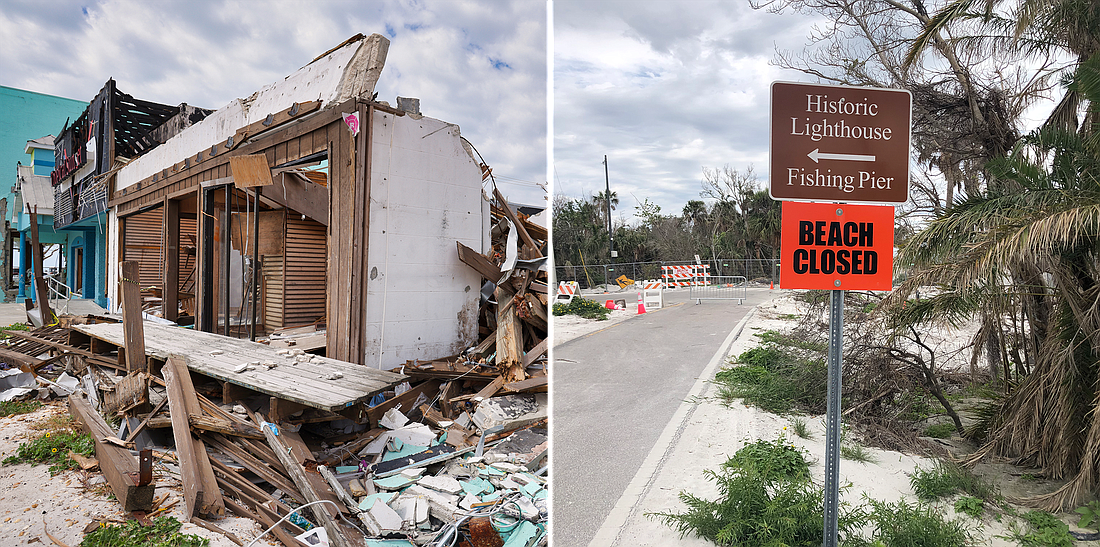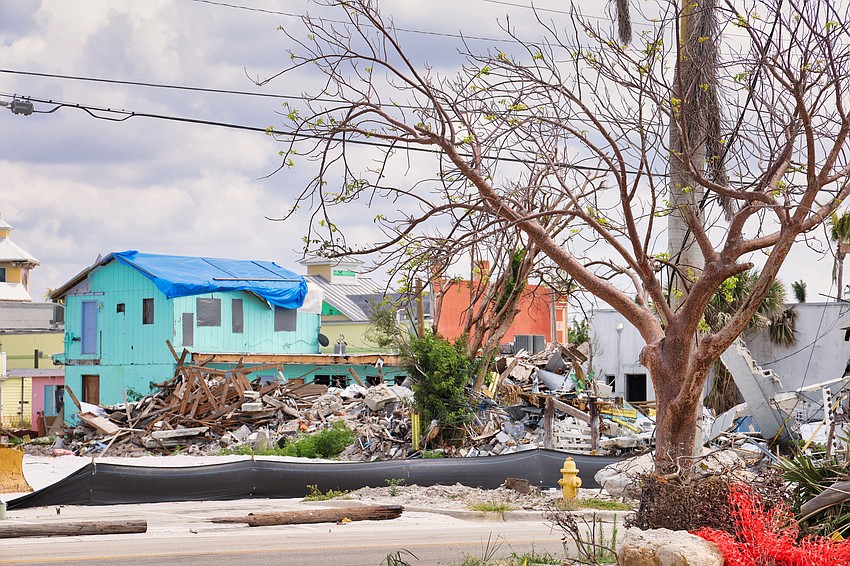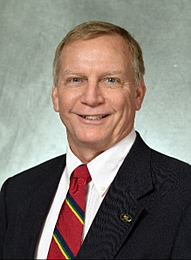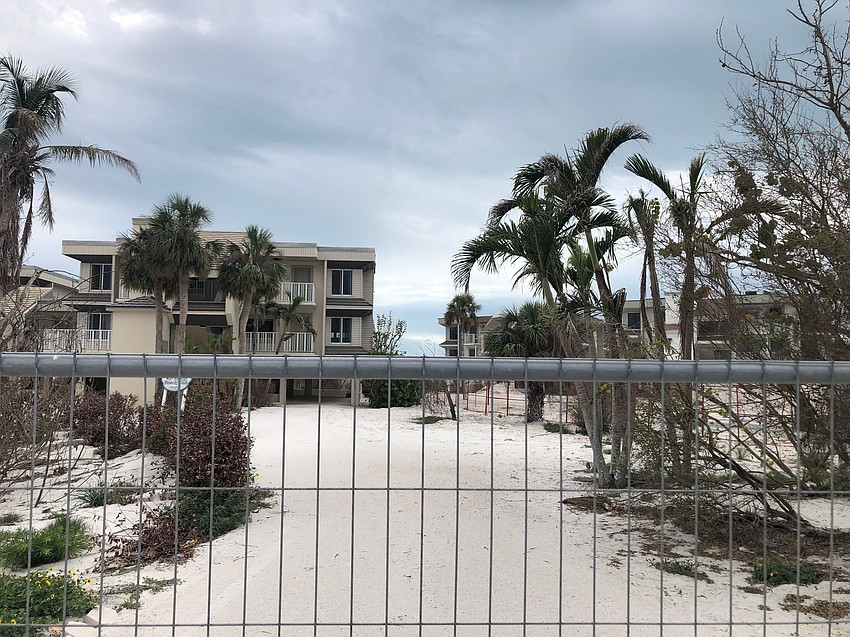- January 1, 2025
-
-
Loading

Loading

Charles Dickens' Tale of Two Cities starts with a comparison of two cities facing the best of times and the worst of times. Southwest Florida has its own tale of two cities happening as we speak, but in this story, for now at least, the best of times of seem a long way off.
The cities are the town of Fort Myers Beach and Sanibel. Both were devastated when Hurricane Ian hit the barrier islands in late September and blew across the state, causing billions in damage and killing hundreds. Yet, as close as these two places are — separated by 14 miles — and as similar as many of their issues are, the pair faces different obstacles when deciding what they are going to look like in the next 10 to 15 years.
Charged in these early days in the process with laying the groundwork for the rebuilding and the future are Fort Myers Beach Mayor Dan Allers and Sanibel Mayor Richard Johnson.
Both mayors spoke at a May 9 meeting of the Real Estate Investment Society in Fort Myers about their cities and what happens next.

Dan Allers was elected to the Fort Myers Beach Town Council in 2020 and named the city’s mayor in November, weeks after Hurricane Ian hit.
Allers is a Minnesota native who moved to Fort Myers Beach in 2012. According to his official bio, he started a construction company in 1998 and has spent his career in the building supplies and construction industry.
This background gives him some insight into what has to be done as the city begins the long, grueling process of rebuilding.
Driving down Estero Boulevard, the main road that runs the length of Fort Myers Beach, the widespread destruction that Ian wrought is still on full display, in places looking like the storm rolled through yesterday, not last fall.

Photo by Stefania Pifferi
But there’s a new storm brewing, and this one is about who will define the future of the city.
Fort Myers Beach has long been known as a destination, an old Florida town that brought generations of visitors. But with so much devastation requiring rebuilding, there is a growing, and real, fear among locals and longtime visitors that developers will scoop up properties with the aim of creating a different type of community, this one with million-dollar condos and high-end restaurants and shops.
Allers is aware of this and is trying to assure constituents that the city will largely retain what has made it a popular destination for generations. But he also knows, and says, the reality is, given the scale of the rebuild, which includes many properties having to be rebuilt with new, more exacting codes, some change is inevitable.
The challenge, as he sees it, is find the right balance.
“As an island, we’re looking at what makes sense,” Allers says. “We want to protect, to keep, our identity the way the comp plan was written…but how can we tweak things?”
He believes by keeping and enforcing the city’s comprehensive plan but being a little flexible when looking at individual projects, the city can thread the complicated needle. Under this approach, the belief is, developers will be able to bring new projects to Fort Myers Beach but won’t overwhelm the character or the history.
Plus, he says, the city can make it so the newer projects have elements that include or give back to the local community, whether that be a bar open to the public or something else.
The first test for this approach could come as soon June or early this summer, Allers says.
A local property owner is working on a plan to transform a piece of property just to the right of the Matanzas Pass Bridge as you cross into the city. The plan is to convert at least some of the area into a more urban, walkable district. Allers says the plan is expected to be revealed at a public forum later in May and, if things go well, the owner will come to the city in June.
“I think the people that don't want any change understand that there's going to be change,” Allers says.
“But that doesn't mean that this has to be Miami, or it doesn't have to be Miami Beach. It doesn't have to be these 25-story buildings. That's the concern. I think we've given them at least the notion that we're not looking to change the land development code or the comp plan to allow that maximum density or intensity. So, I think that's helped calm things down a little bit.”

Richard Johnson became mayor of Sanibel in March.
He's lived on the island for about 22 years and has been on the Sanibel City Council since 2019. Like his peer on Fort Myers Beach, Johnson comes to the job with a skill set that uniquely qualifies him to deal with the aftermath of the storm: he used to be in the insurance business, specializing in disaster recovery.
But on the morning of Sept. 28 he was like any other resident of Sanibel. Scared. The massive storm had shifted and was coming their way. At about 6:30 a.m., he decided to evacuate. By 8:30 a.m. he was on the way out.
Johnson tells the story to illustrate a point. He says that after years of warning about the big hurricane, citizens, on Sanibel and statewide, have in some ways become desensitized to how powerful these storms can be. And that’s risky, especially for those living on the coasts. “I think Ian reset that expectation,” he says.
“I think that's one of the things I will do, strongly encourage folks to get prepared and get out,” Johnson says. “We live on barrier islands and they're called barrier islands for a reason. They're there to protect the mainland from the storm surge and inundation.”
Driving around Sanibel months after Ian hit, the damage is not as visible as it is in Fort Myers Beach. But it’s there of course. Buildings remain shuttered, shopping centers are boarded up and surrounded by fencing, houses near the water are still damaged and just a few weeks back some beaches were still shut down.

The reason for that is also why the issues Sanibel is dealing with as it prepares to rebuild are different than other beachfront communities.
While Fort Myers Beach is a throwback to the old vacation towns of Florida with block after block of development, Sanibel is a reminder of the natural beauty that first brought people to the state. About 70% of the island is set aside for environmental preservation and the rest is quiet, low key.
Johnson says residents need not fear that the character of Sanibel is going to change. Yes, the city will need to address resiliency issues and make sure lessons learned from Ian aren’t lost, but what makes Sanibel, Sanibel, he says, will not be changing.
The city is governed by the Sanibel Plan, a comprehensive roadmap of sorts first enacted in 1976 and since revised. In the preamble to the 2013 revision, the authors say early city leaders created it as they were “planning for the orderly future development of an island community known far and wide for its unique atmosphere and unusual natural environment and to ensure compliance with such planning so that these unique and natural characteristics of the Island shall be preserved.”
Not long after, the city developed its land development code.
Despite the massive amount of work that needs to be done — from getting residents back in their homes to getting the business community back in business to restore the tax base — Johnson says the city will not deviate from the plan and the code as it rebuilds to ensure the community isn’t overrun by outsiders, or others trying to seize and cash in on a difficult situation.
“That’s one of the things, when I talk to residents and business owners, that I think is really important,” Johnson says. “They’ve started talking about how they want to recover their properties, and how they want their business to come back. And I tell them the same thing. Look at the code. Start with the code first. And then begin to develop your business plan on how you're going to get things going.”